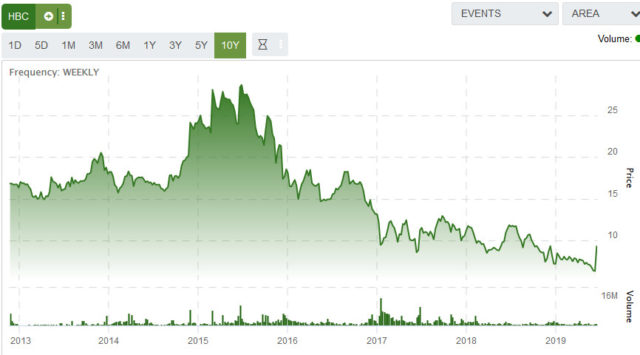One yellow flag for investors is if company management starts to deviate away from previously professed strategies without giving reasonably decent justification for such changes.
Since 2016’s recapitalization, GCM has been focused on improving its mining operations (so they could pay back the debt incurred from the recap). The debentures issued in the 2016 recapitalization were redeemed and refinanced in May 2018, which provided less restrictive covenants for the debt that was issued (TSX: GCM.NT.U).
At the end of June 2018, GCM had about US$32 million and US$98 million in notes outstanding. For the first half of 2018, they generated US$14 million in “excess cash flow”. They continue to generate excess cash flow today.
The point of the above narrative is to illustrate that GCM’s financial situation is a lot more favourable than it was three years ago. They have a lot more flexibility to invest internally in their own operation (Segovia, Marmato), but they have taken an interest in Sandspring Resources (TSX: SSP).
We continue down the timeline:
- July 26, 2018– GCM buys CAD$4 million of SSP, also receives shares for Chicharron project in Segovia (they sold their 30% interest to SSP for 15M SSP shares, about 5km east of GCM’s current operation in Segovia – SSP owns 100% of it now).
- October 3, 2018 – GCM buys another CAD$1 million of SSP
- February 11, 2019 – GCM buys another CAD$0.7 million of SSP
Everything to this point is consistent – now that they have capital, GCM chose to invest in a project in Guyana. I don’t really like these corporate inter-relationships since there is so much room for error, but at least the strategy is consistent. After this date, things get screwy:
- March 1, 2019 – GCM files for an equity offering, wants to raise gross CAD$25 million. Warrants for C$5.75, stock price to be determined by market. Stock crashes. Cited reason for the capital offering: Accelerated drilling in Segovia. It raises the hidden question – why are they dumping money in SSP (CAD$5.7 million to date plus disposition of 30% Chicharron stake) if it was better spent on drilling in Segovia or Marmato? GCM earned US$44 million in free cash flow in fiscal 2018, is this not enough? GCM ended 2018 with US$39 million cash+equivalent and the only debt on the books was the US$89 million in GCM.NT.U.
- March 4, 2019 – GCM opts to change the offering and raises CAD$20M instead in debentures (convertible at CAD$4.75), CAD$18M from MM Capital Partners, CAD$2M from insiders.
- May 30, 2019 – GCM will be buying 2/3rds of a $3 million non-brokered placement (another CAD$2 million of SSP) – this was “up-sized” two days later to a $4 million placement –
not clear whether the 2/3rds applies to the $4 million or whether it will be a $2 million commitment. Let’s assume $2 million. As of the date of this writing this has not been confirmed. (Update, June 12, 2019: $2 million investment)
- June 10, 2019 – NCIB announcement. Wasn’t this capital supposed to go to Segovia drilling? In fairness to management, this does not commit them to repurchasing shares, but it does signal odd capital priorities (raising capital three months earlier, only to buy it back?).
MM Asset Management, the firm that bought the CAD$18 million in debentures, filed June 10, 2019 that their stake is now 6,510,699 shares of GCM, plus $18 million in debentures, for a consolidated ownership of 19.77% if they convert (doesn’t factor in the dilution with the outstanding warrants, however).
To date, GCM has sent CAD$7.7 million into SSP stock (with the $2 million invested on June 12, 2019).
I find these capital allocation decisions to be highly mysterious. Now that the debt covenants have been relaxed (you can read the restrictions in Section 5.10 of the indenture – condensing the legalese, the material points are a 50% consolidated net income (note: as defined on page 9) restriction, subject to a $10 million or 2.5% tangible net asset floor), GCM has the ability to dabble externally and also with its own stock.
At least there is protection for Noteholders.

